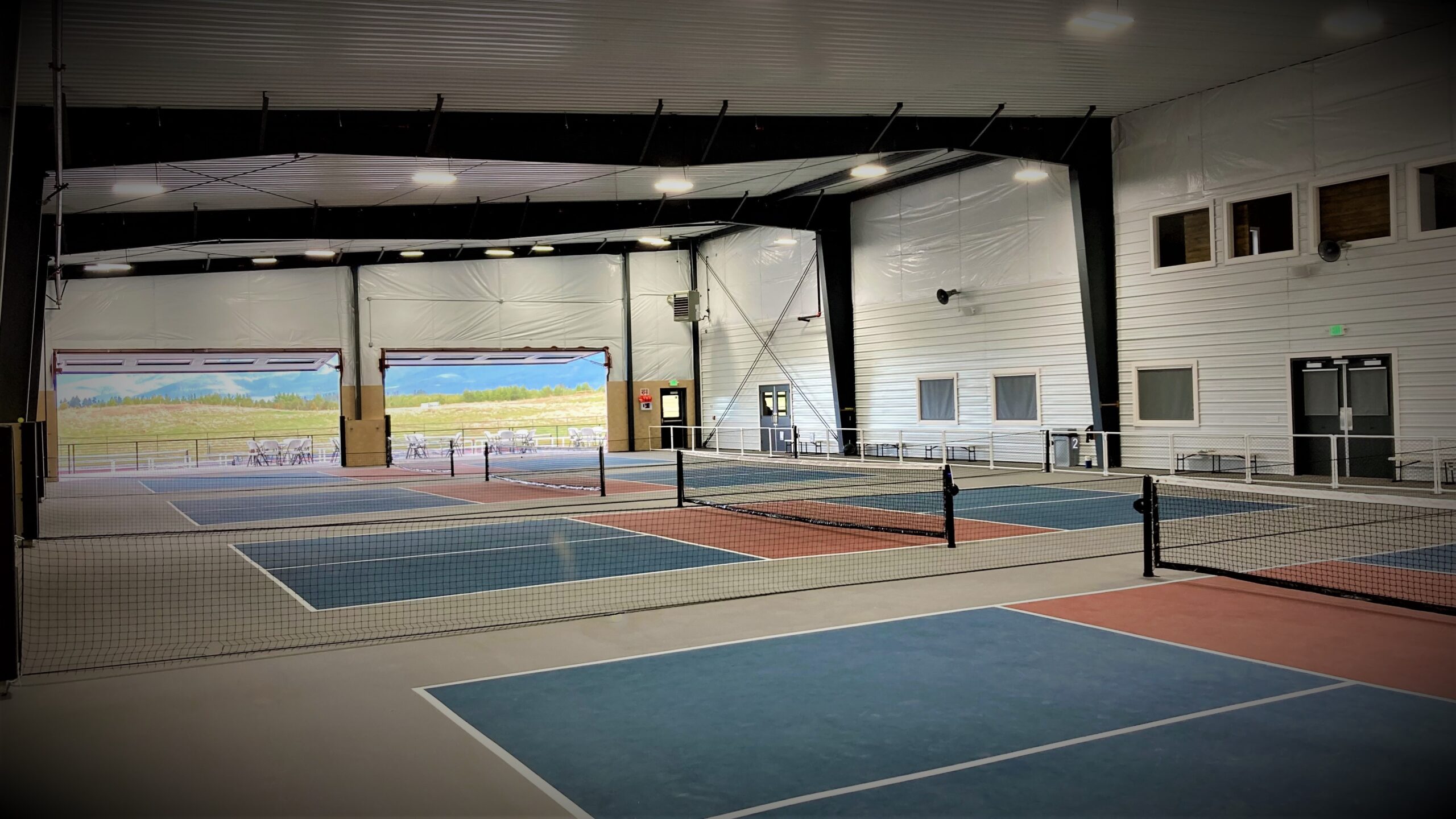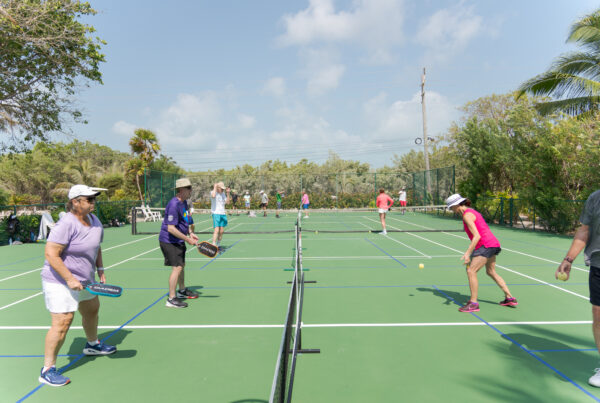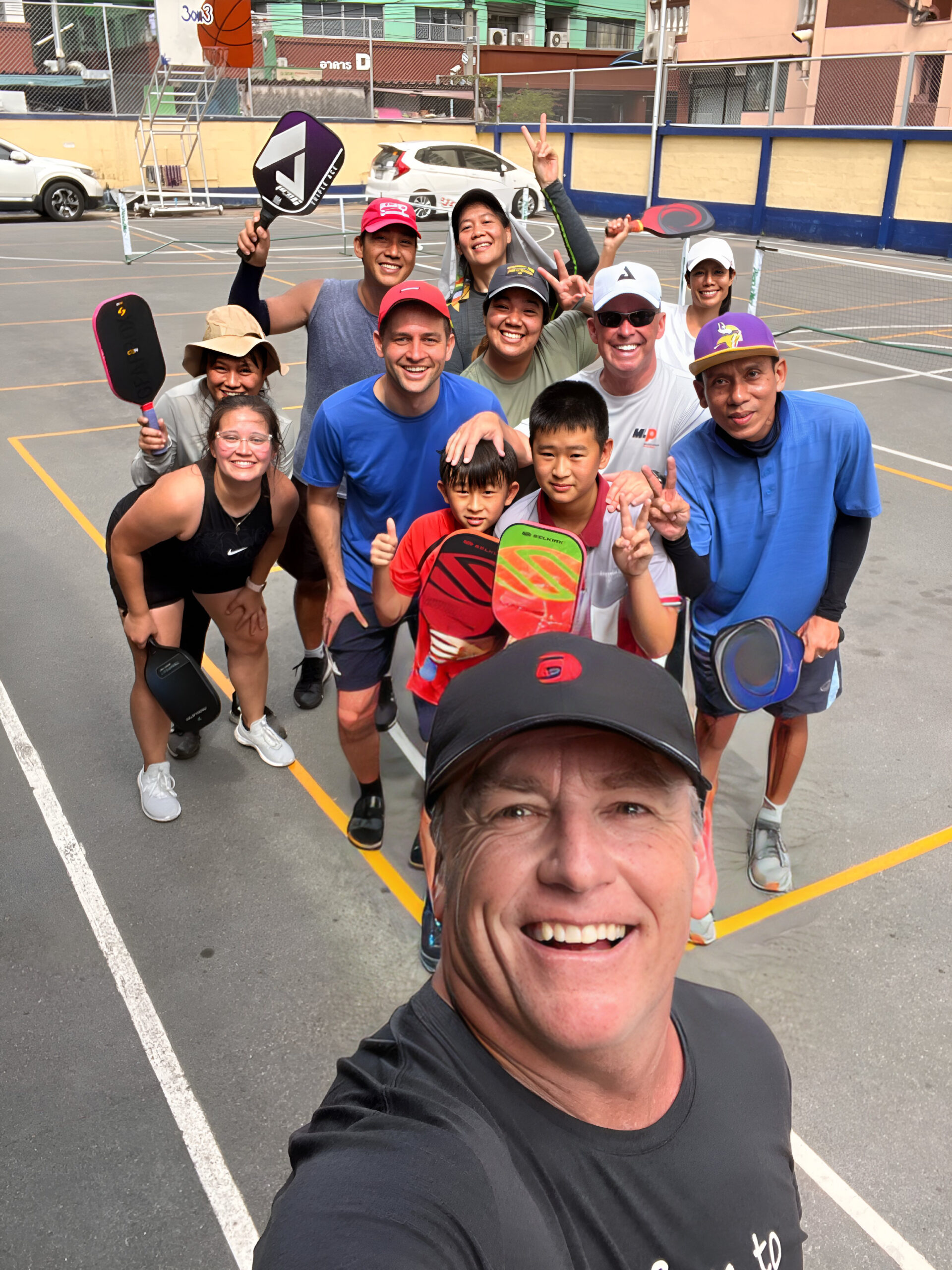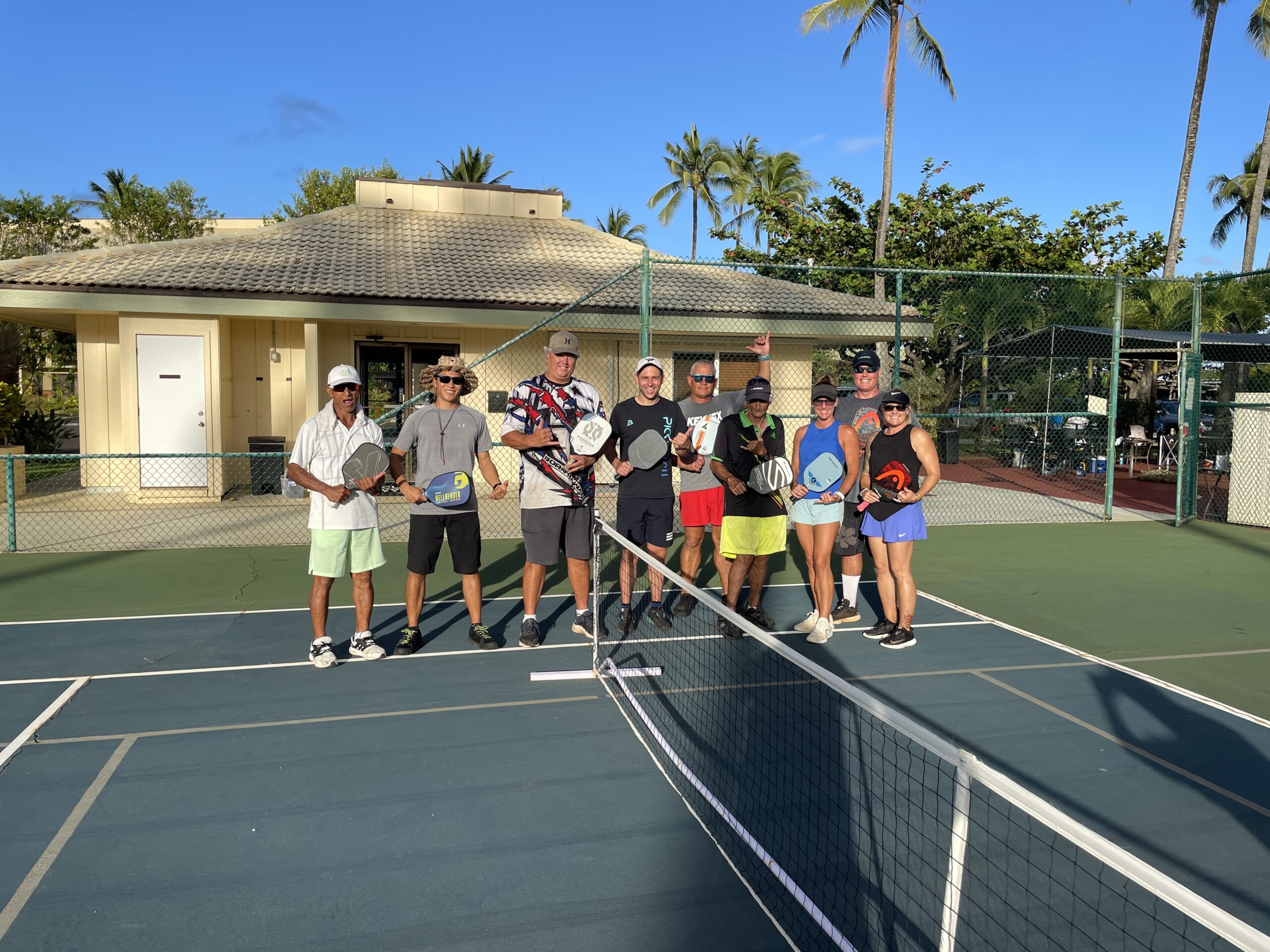Depending on where you live, it is sometimes necessary to switch between indoor and outdoor pickleball venues because of the weather, the season, or the availability of courts. Since many factors influence play, outdoor and indoor pickleball can feel like different sports. We will explain some of the main differences between outdoor and indoor pickleball and some strategies for playing better in each.
Note: This article focuses on indoor pickleball on gym floors. Indoor pickleball on concrete surfaces is more similar to outdoor pickleball, although some differences discussed apply.
Balls
Balls are one of the main differences between outdoor and indoor pickleball. Although there are a variety of outdoor and indoor balls, outdoor balls typically have smaller holes and are heavier. Outdoor balls are made this way because of windy conditions and because concrete cracks balls faster. Indoor pickleballs are usually lighter with smaller holes. Gym floors are not as hard as concrete, with no wind factor. Indoor balls travel slower than outdoor balls, making it harder to hit a winner, but it is also easier to keep the ball in play.
Surface
Most playground surfaces contain some type of concrete or asphalt mix. The best outdoor surfaces are post-tension concrete that prevents cracking and has some cushioning that makes it better for joints. Indoor courts are typically wooden gym floors that are softer and easier on the body. However, I have played on as diverse as rubber-chip, carpet, and even roller-hockey courts.
Lines
One primary difference in outdoor vs. indoor pickleball is the lines. Nowadays, most outdoor pickleball venues have dedicated courts with only one set of lines. Some courts still use both tennis and pickleball lines. On the other hand, indoor courts have various sets of lines for sports such as basketball and volleyball. One challenging aspect of indoor pickleball is clearly seeing the correct set of lines. Additionally, indoor pickleball courts often require diverse line configurations due to the multipurpose nature of the space, necessitating meticulous management for activities such as basketball, volleyball, and tennis court maintenance.
Lighting
Lighting on outdoor courts is a factor when the sun is directly in your eyes or when it begins to grow dark. At night, outdoor courts are often poorly lit, and it can be challenging to see the ball, especially when it is high. Indoor courts have consistent lighting throughout the day but vary significantly in lighting fixtures and brightness.
Temperature
Outdoor pickleball is affected by changes in temperature. The balls are harder and faster in the cold, cracking easier and slower in the heat, getting soft. Your body is also affected, especially in the summer, when dehydration and heat exhaustion are risks. Factor this in when playing outdoors and hydrate/cool down early to prevent the temperature from becoming an issue. Gyms are typically temperature-controlled environments less affected by the outside temperature. However, I have played in many unheated or uncooled gyms that can pose challenging conditions too.
Other Distractions
Outdoor courts have audio-visual distractions, including cars, dogs barking, people jogging, lawnmowers, leaf blowers, airplanes, etc. As mentioned, changing light, wind, and precipitation conditions can also affect play. Indoor courts are typically not dedicated pickleball courts. Sometimes the lines are close together, and balls keep rolling onto your court. Other times the back wall is too tight or the ceiling too low, affecting shots.
Tips for Playing in Each
Here are a few tips for playing great pickleball outdoors and indoors.
1. Warm-Up
Many people play recreational games without warming up. It takes time to get used to new balls, though. Take a few minutes to warm up, remembering that outdoor balls are faster and do not bounce as high. In comparison, indoor balls are slower and bounce higher. Keep your swing smaller when playing outdoors, and keep the ball in play longer indoors to take advantage of each type of ball.
2. Focus on Your Game
Allowing distractions like the sun and wind outdoors or the lines and lighting indoors let the conditions get in your head. If you are struggling with the conditions, your opponents are also likely to struggle. So stay mentally tough by not letting it bother you and just focus on the next point.
3. Margin for Error
It is hard to switch back and forth between surfaces. But the key to winning most pickleball – outdoors or indoors – is making fewer mistakes than the opponents. By hitting a little higher over the net and a little more towards the middle when you have just switched surfaces, you reduce errors and allow the opponents to make a mistake. Many of them will give you free points if you let them.
There are pros and cons to both outdoor and indoor pickleball. Sometimes the same tournament will have outdoor and indoor venues, and you must keep switching surfaces. Know the differences and warm up thoroughly to have fun and play your best pickleball. You can also invest in your own Custom Pickleball Paddles to up your game.
Want to travel the world and get more tips on improving your game? Join us on one of our adventures where we travel the world, play pickleball, help improve your game and make lasting memories. Learn more about our upcoming trips.




